“One of the hardest things about expanding our technique is going ‘against the grain’ of learned patterns”: Rewire your lead playing with four soloing ideas inspired by contemporary blues maestros
Expand upon traditional blues approaches with this lesson in the style of Joe Bonamassa and Eric Johnson

This is a lesson in ‘modern blues’ – that may seem a little ambiguous at first glance, so to be more specific, I’m referring to the inclusion of unusual and non-pentatonic phrases alongside more traditional ideas.
The example solo was played as a continuous live take, but we’ve broken it up into four sections to make it easier to digest. The more modern lines either take the shape of arpeggios (and fragments of these) or pentatonic ideas that are more influenced by players such as Joe Bonamassa and Eric Johnson, rather than the more ‘classic’ vocabulary of B.B. King or Eric Clapton.
In addition to this, there are some unusual picking patterns, or combinations thereof. Some of these may seem counterintuitive to start with, but they are worthwhile as they can enable the relaxed articulation of licks that would be far trickier otherwise.
Despite this, it isn’t always an exact science and there may be instances where you prefer to pick something differently from the suggestions on the transcription. You’re the final judge in these situations, but do bear in mind that one of the hardest things about expanding our technique is going ‘against the grain’ of learned patterns – sometimes referred to as muscle memory. It might seem like a backward step at first, but if you’re prepared to deal with the initial discomfort, the rewards are well worth it.
The solo was recorded with a relatively high-gain tone, so you’ll want to stay in control of any unused strings with the side/heel of your picking hand. There are also times when your fretting hand comes into play in this regard, only pressing down the strings as and when they’re needed, and not allowing notes to ring together. Hope you enjoy the solo and see you next time.

Example 1
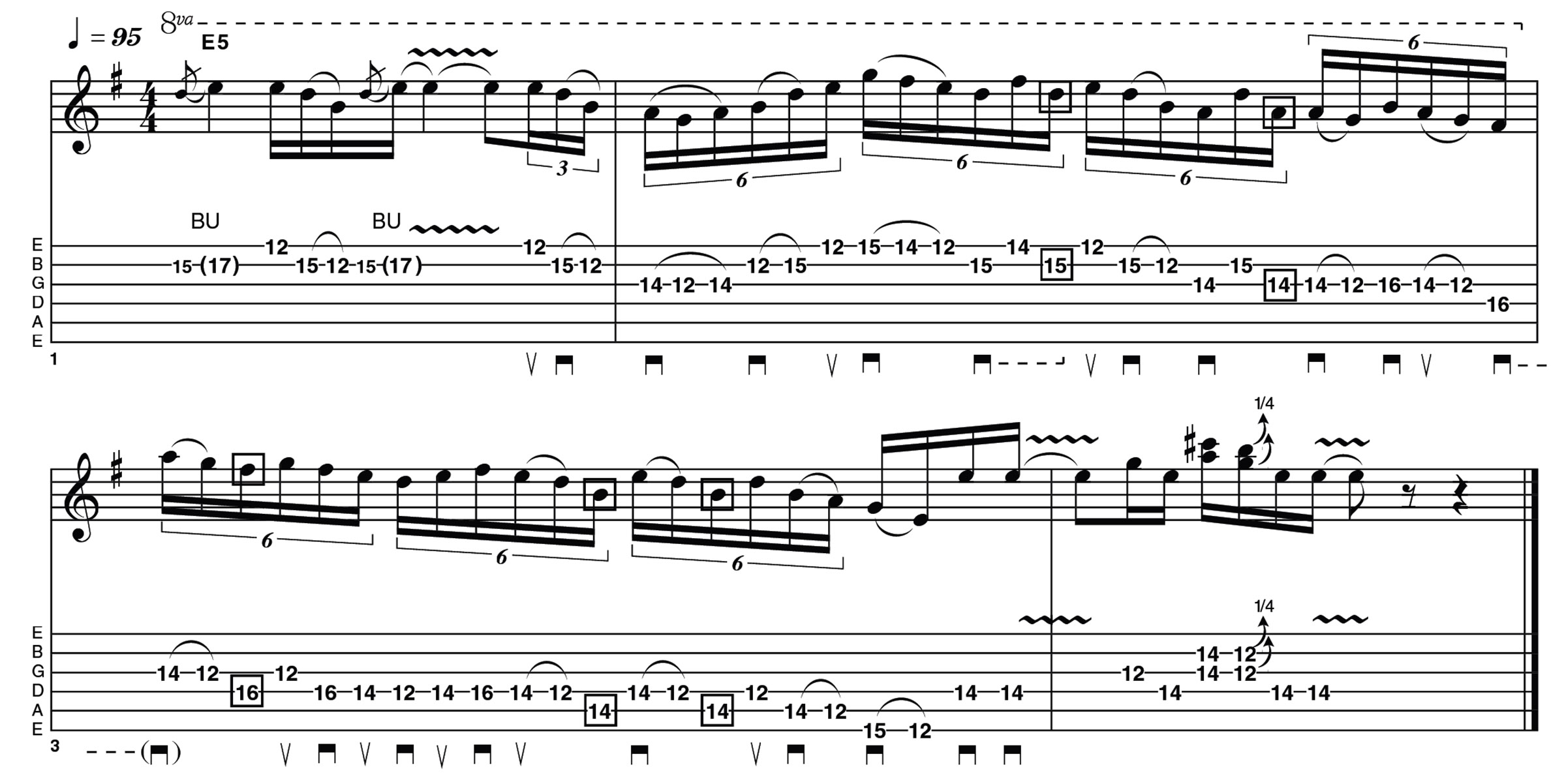
This first phrase begins with a more classic pentatonic feel but quickly switches to a more three-note-per-string approach using a combination of shapes 1 and 2 of the E minor pentatonic.
Watch the picking hand closely here: there are quite a few consecutive downstrokes played as one movement when crossing adjacent strings. Start by following the directions exactly, but you’ll find there are many ways this technique can be used, so be prepared to experiment.
Example 2
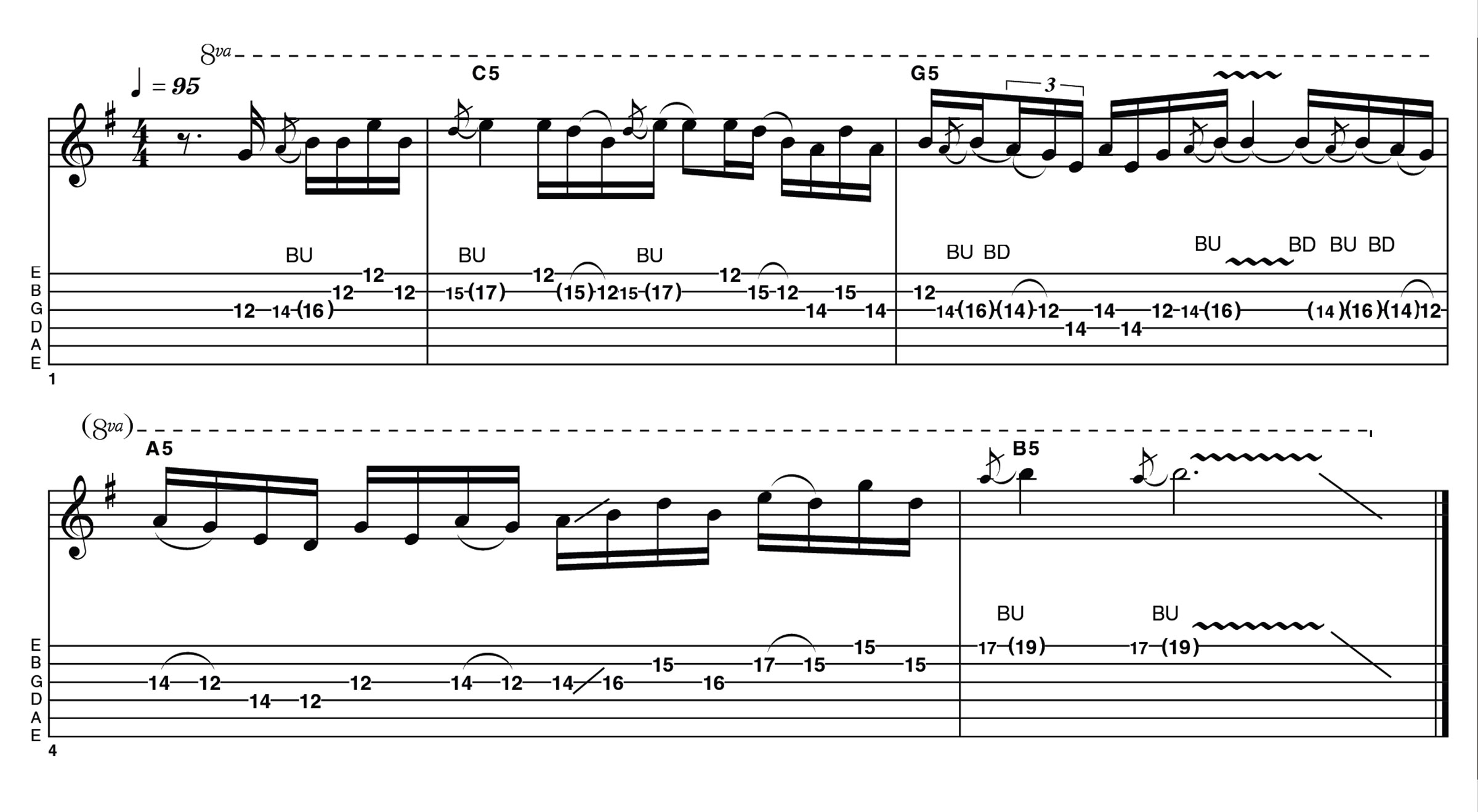
This example sandwiches an alternate-picked descending pentatonic lick between some more traditional ideas. We’re descending the shape 1 E minor pentatonic in groups of six, starting on the first string then coming back to start another group of six from the second string and so on.
This finishes with an octave jump you’ll often hear from Eric Johnson and Joe Bonamassa. All this strict picking is then balanced out with a more funky phrase using doublestops and bends.
Example 3
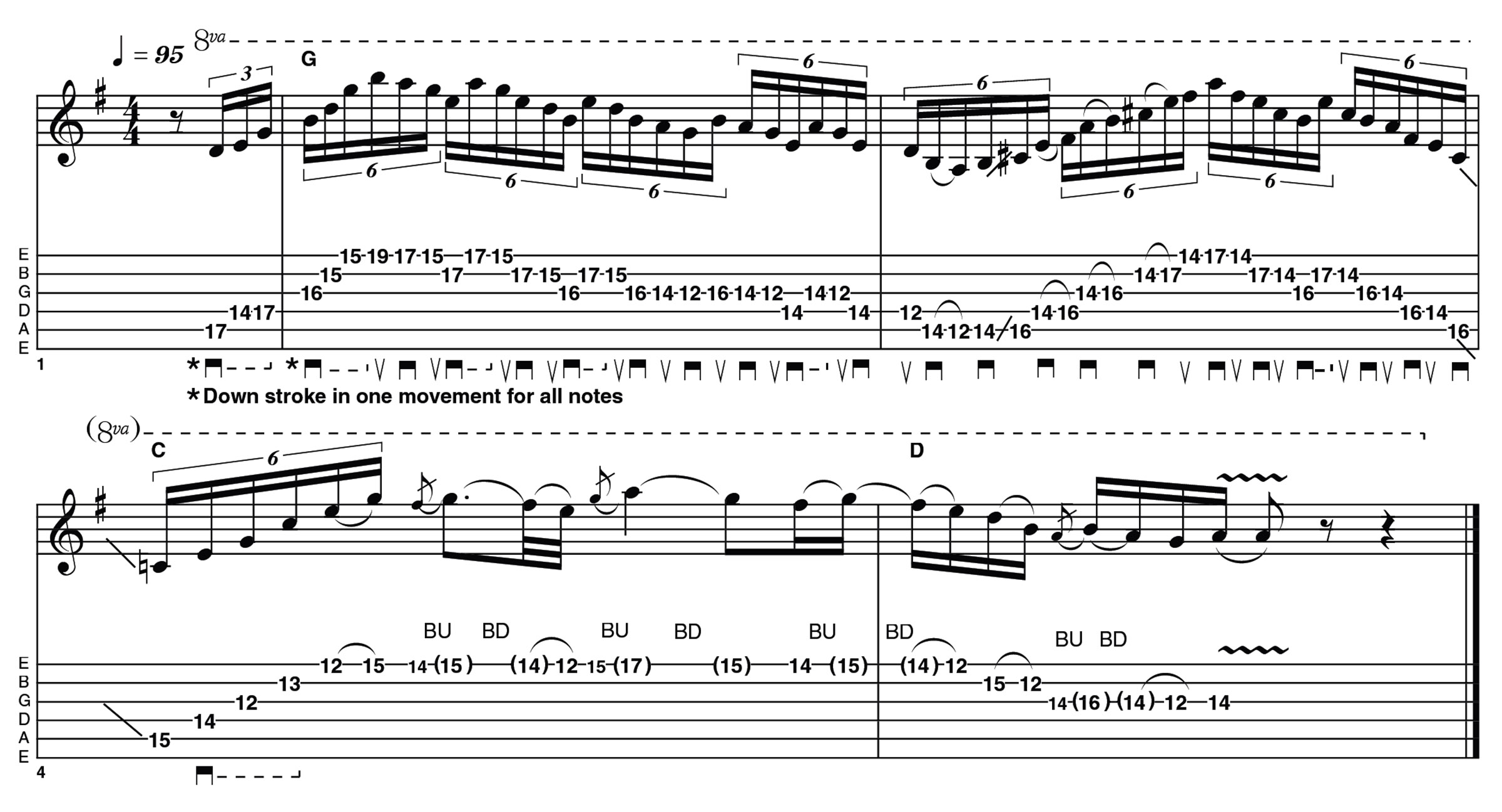
This is the most ‘technical’ part of the solo; the trickiest part to get your head around is probably the first two bars. We start with a G major arpeggio but quickly switch to a more pentatonic approach, using a similar picking style to Example 1.
As a general rule, I’m using alternate picking when there is more than one note played on a string, but I’m using one single downstroke to change to the adjacent string.
The C major arpeggio in bar 3 takes a one-note-per-string approach, played with a single downstroke and only pressing the strings down with the fretting hand when needed.
Example 4
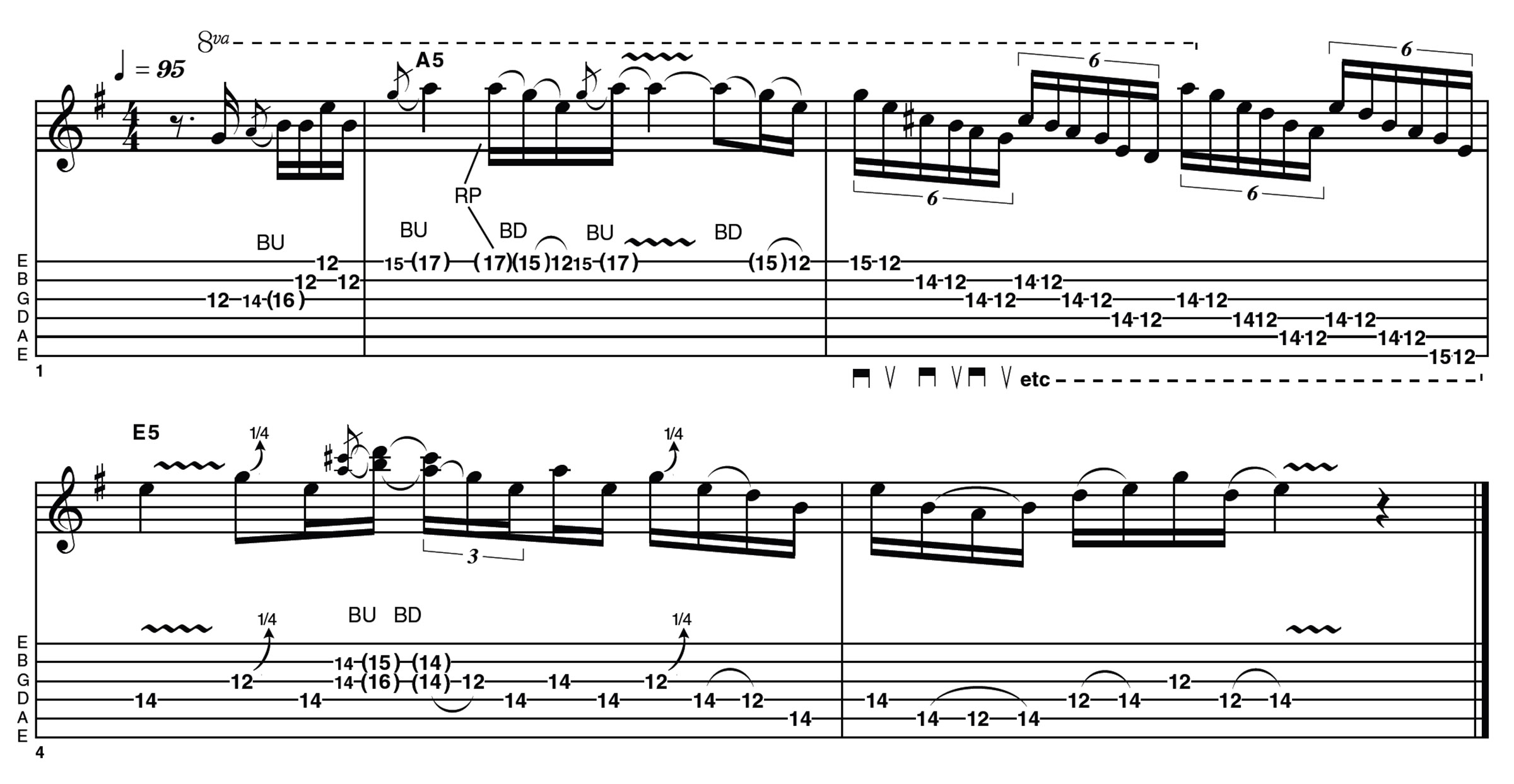
This is a much more traditional lick to finish things up, though notice there are places where it’s most practical to press notes at the same fret on adjacent strings by ‘rocking’ one finger between the two.
There are a couple of instances where you’ll notice this happening in the previous examples, but check out bars 2, 3 and 4 for some clear examples of this. It is possible to finger this more conventionally, but it might not sound as fluent.
Hear it here
Hear it here
Joe Bonamassa – Live From The Royal Albert Hall
Joe Bonamassa is most definitely the touchstone for the example solo this month, and this album contains quite a few examples of the techniques we’ve been looking at but in a more ‘real world’ musical context.
To start with, check out So, It’s Like That, Sloe Gin and So Many Roads. It’s worth bearing in mind that these techniques – though a lot of fun once you’ve got them under the fingers – form part of the whole, rather than becoming the basis of your vocabulary.
Eric Johnson & Alien Love Child – Live And Beyond
Eric is very much an originator of this fluid but bluesy approach, combining non-traditional pentatonic lines with arpeggios and chord fragments. Have a listen to Zenland, Last House On The Block (which includes a great extended Cream-style jam) and Once A Part Of Me.
In this live trio format, Eric does a great job of implying chords and keeping up harmonic interest by using these non-traditional approaches, to say nothing of the range of exemplary tones!
Gary Moore – Still Got the Blues
Though Gary’s playing leans more towards the more technical side of traditional pentatonic, his picking-hand technique falls firmly into the area suggested by the example solo.
He frequently brushes across adjacent strings with a single movement to articulate phrases in a much more fluent way than alternate picking could produce. Check out the title track, plus Oh Pretty Woman and Walking By Myself, for some great examples that may have previously slipped under your radar.
Get The Pick Newsletter
All the latest guitar news, interviews, lessons, reviews, deals and more, direct to your inbox!
As well as a longtime contributor to Guitarist and Guitar Techniques, Richard is Tony Hadley’s longstanding guitarist, and has worked with everyone from Roger Daltrey to Ronan Keating.
You must confirm your public display name before commenting
Please logout and then login again, you will then be prompted to enter your display name.



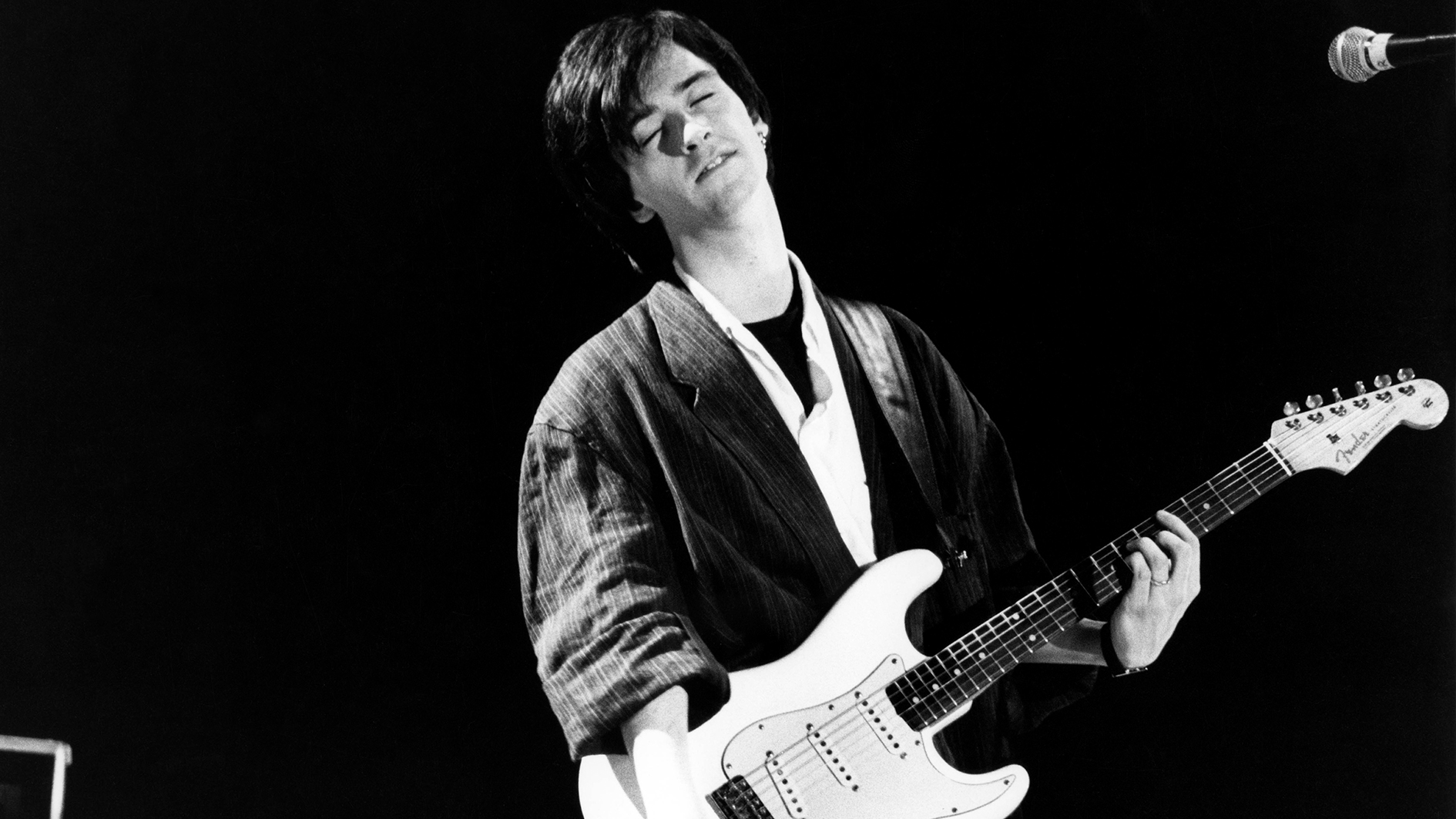




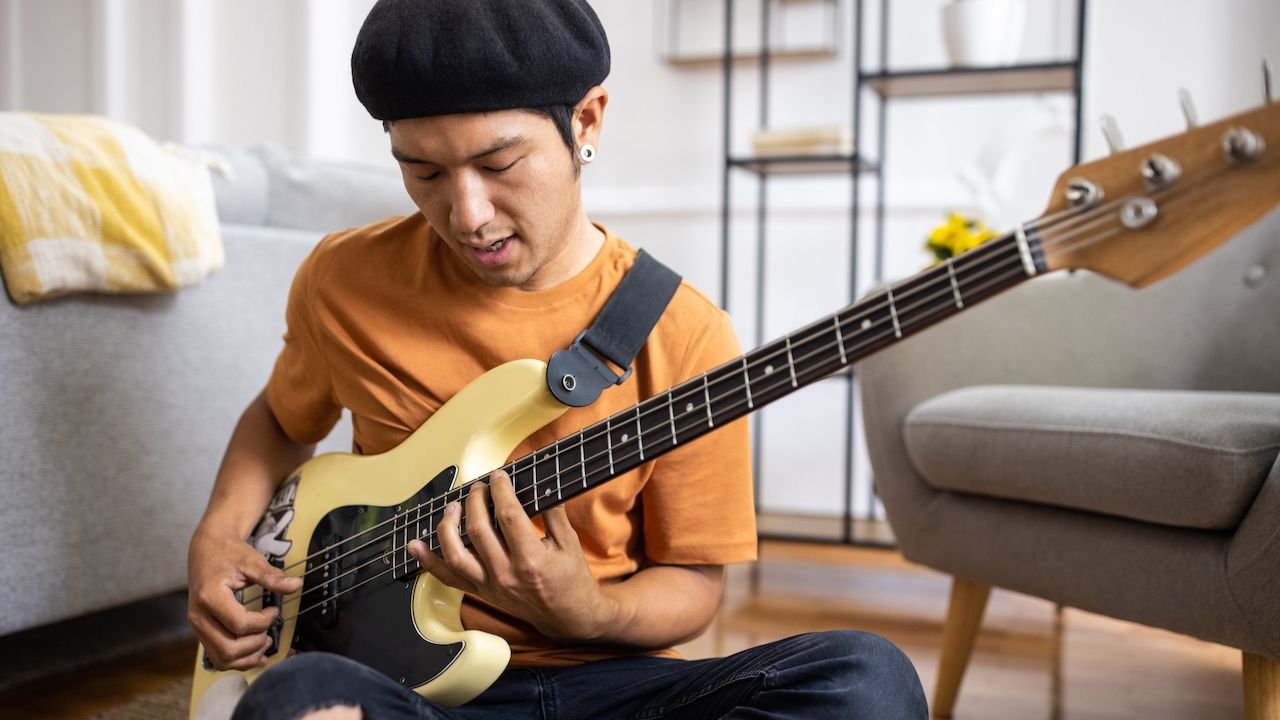


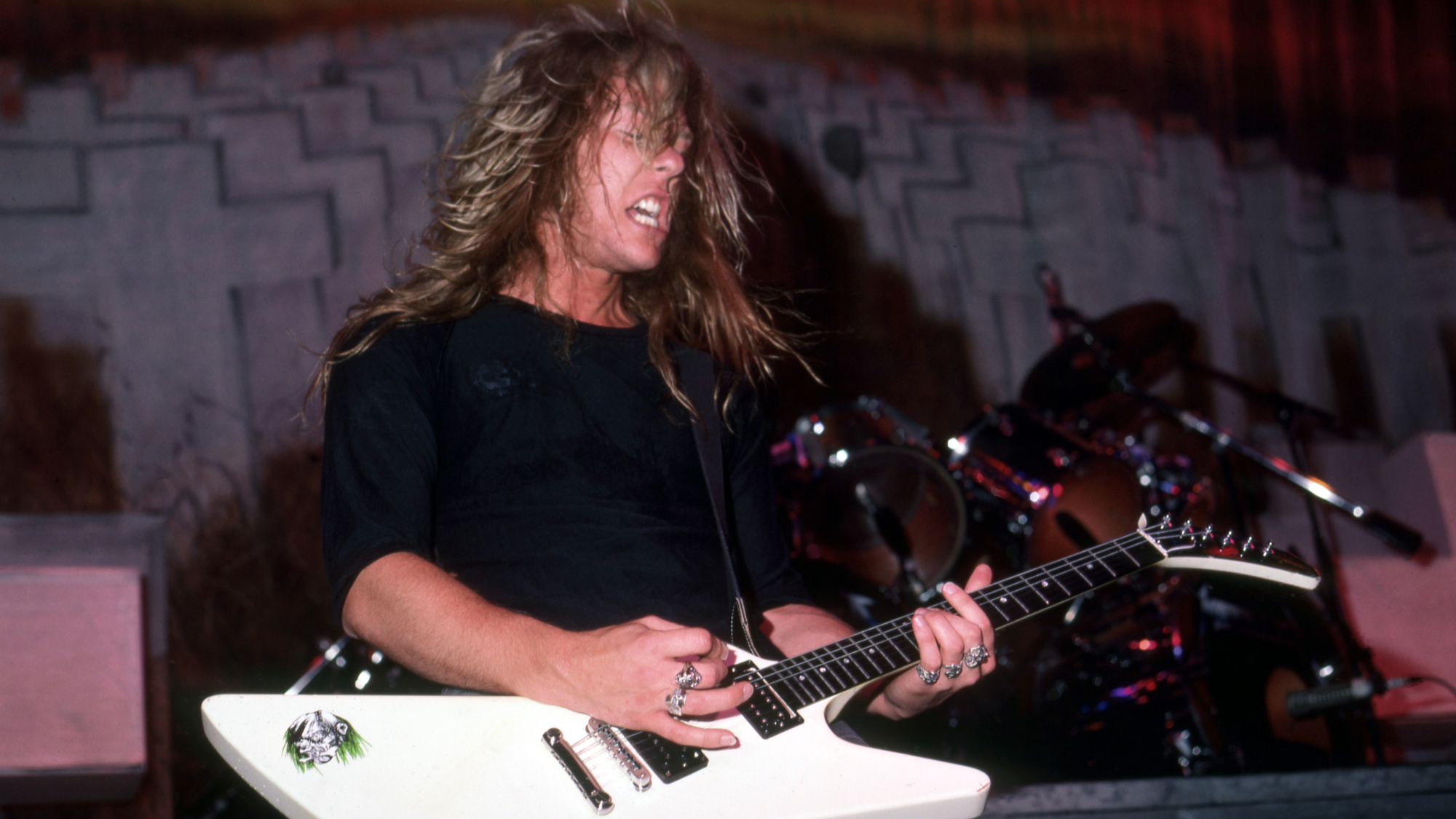
![Joe Bonamassa [left] wears a deep blue suit and polka-dotted shirt and plays his green refin Strat; the late Irish blues legend Rory Gallagher [right] screams and inflicts some punishment on his heavily worn number one Stratocaster.](https://cdn.mos.cms.futurecdn.net/cw28h7UBcTVfTLs7p7eiLe.jpg)
